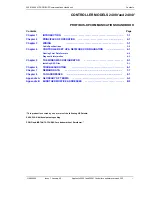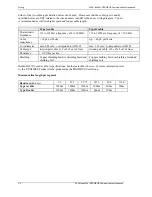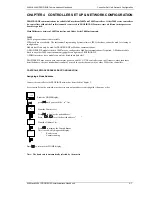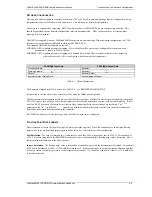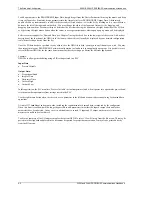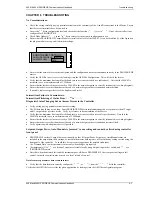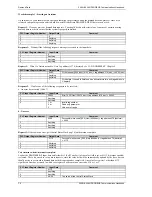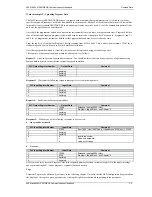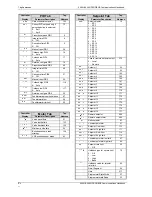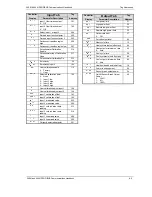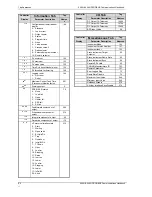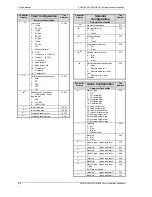
2408
f & 2404f PROFIBUS Communications Handbook Demand Data
2408
f and 2404f PROFIBUS Communications Handbook 7-1
CHAPTER 7 DEMAND DATA
The GSD file is used to define those parameters which need to be updated continuously. It is, therefore, a convenient way to
transfer input and output data between the controller and the master PLC or Supervisory Computer. It is, however, wasteful in
comms bandwidth if, for example:
1. It is used to read or write to occasionally accessed data, such as autotune or a three term value
2. Complex read/writes are performed which require a lot of data exchange, such as setting up and running a programmer.
For these parameters use the ‘Demand Data’ sub-protocol. This allows read/write access to any parameter within the
controller using, what are known as ‘Tags’ which identify the parameters. Each parameter has a unique 16 bit tag, a full list of
which is given in the next chapter.
When Demand Data is used, the first four (16 bit) registers of the PROFIBUS-DP Output data are reserved to encode a
‘request message’ using the protocol. The control program is responsible for writing values into the first four registers to
make requests. The instrument uses the first four registers of PROFIBUS-DP input data as a ‘response message’ to return
values and indicate success or failure of the operation that was requested.
It is enabled by the PROFIBUS-DP master setting the first byte of the module configuration data to 73 hex. This is done
automatically, when:
•
Using the EURD2400.GSD GSD file.
•
The check box (Use Demand Data) in the EURO2400.GSD configurator program is selected.
Demand Data is supported by standard software in many PLCs. It can be implemented easily as part of the PLC program.

